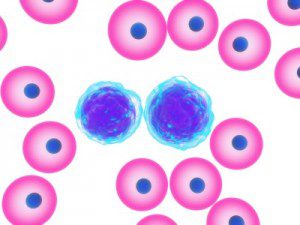By Sayer Ji
Contributing Writer for Wake Up World
A new study, yet to receive any media attention, reveals the “leukemogenic” properties of the Bt toxin biopesticides engineered into the vast majority of GMO food crops already within the US food supply.
Last September, the causal link between cancer and genetically modified food was confirmed in a French study, the first independent long-term animal feeding study of its kind. The disturbing details can be found here: New Study Finds GM Corn and Roundup Causes Cancer In Rats
Now, a new study published in the Journal of Hematology & Thromboembolic Diseases indicates that the biopesticides engineered into GM crops known as Bacillus Thuringensis (Bt) or Cry-toxins, may also contribute to blood abnormalities from anemia to hematological malignancies (blood cancers) such as leukemia.[i]
A group of scientists from the Department of Genetics and Morphology, Institute of Biological Sciences, University of Brasilia, Brasilia/DF, Brazil set out to test the purported human and environmental biosafety of GM crops, looking particularly at the role that the Bt toxin found within virtually all GM food crops plays on non-target or non-insect animal species.
The research was spurned by the Brazilian Collegiate Board of Directors of the National Sanitary Surveillance Agency (ANVISA), who advocated in 2005 for evaluations of toxicity and pathogenicity of microbiological control agents such as Bt, given that little is known about their toxicological potential in non-target organisms, including humans.
While Bacillus Thurigensis spore-crystals have been used since the late 1960’s in agriculture as a foliar insecticide, it was only after the advent of recombinant DNA biotechnology that these toxin-producing genes (known as delta endotoxins) were first inserted into the plants themselves and released into commercial production in the mid-90’s, making their presence in the US food supply and the bodies of exposed populations ubiquitous.
What the new study revealed is that various binary combinations and doses of Bt toxins target mammalian cells, particularly the erythroid (red blood cell) lineage, resulting in white and red blood cell changes indicative of significant damage. Some of these adverse changes included anemia, and suppression of bone marrow proliferation and abnormal lymphocyte changes consistent with some types of leukemia.
The researchers also found that one of the prevailing myths about the selective toxicity of Bt to insects, the target species, no longer holds true:
It has been reported that Cry toxins exert their toxicity when activated at alkaline pH of the digestive tract of susceptible larvae, and, because the physiology of the mammalian digestive system does not allow their activation, and no known specific receptors in mammalian intestinal cells have been reported, the toxicity these MCAs to mammals would negligible [8,22,23]. However, our study demonstrated that Bt spore-crystals genetically modified to express individually Cry1Aa, Cry1Ab, Cry1Ac or Cry2A induced hematotoxicity, particularly to the erythroid lineage. This finding corroborates literature that demonstrated that alkali-solubilized Bt spore-crystals caused in vitro hemolysis in cell lines of rat, mouse, sheep, horse, and human erythrocytes and suggested that the plasma membrane of susceptible cells (erythrocytes, in this case) may be the primary target for these toxins [33]
The study also found:
1) That Cry toxins are capable of exerting their adverse effects when suspended in distilled water, not requiring alkalinization via insect physiology to become activated as formerly believed.
2) That a dose of Cry1Ab as low as 27 mg/kg, their lowest tested dose, was capable of inducing hypochromic anemia in mice – the very toxin has been detected in blood of non-pregnant women, pregnant women and their fetuses in Canada, supposedly exposed through diet.
3) Whereas past reports have found that Bt toxins are generally nontoxic and do not bioaccumulate in fatty tissue or persist in the environment, the new study demonstrated that all Cry toxins tested had a more pronounced effect from 72 hours of exposure onwards, indicating the opposite is true.
4) That high-dose Cry toxin doses caused blood changes indicative of bone marrow damage (damage to “hematopoietic stem cell or bone marrow stroma”).
The authors noted their results “demonstrate leukemogenic activity for other spore-crystals not yet reported in the literature.”
They concluded:
[R]esults showed that the Bt spore-crystals genetically modified to express individually Cry1Aa, Cry1Ab, Cry1Ac or Cry2A can cause some hematological risks to vertebrates,increasing their toxic effects with long-term exposure. Taking into account the increased risk of human and animal exposures to significant levels of these toxins, especially through diet, our results suggest that further studies are required to clarify the mechanism involved in the hematotoxicity found in mice, and to establish the toxicological risks to non-target organisms, especially mammals, before concluding that these microbiological control agents are safe for mammals.
Did you get that? Their conclusion is that it is premature to consider GM toxins to be safe in mammals. Billions have already been exposed to Bt toxins, in combination with glyphosate-based herbicide formulations such as Roundup, and yet, most biotech research scientists and industry regulators still claim they are unequivocally safe. This has much to do with the well-known relationship that biotech corporations like Monsanto have with so-called ‘check book’ science firms who are basically paid to obfuscate adverse health outcomes of their products, such as the GMO-Cancer link. [also see: Monsanto-Funded Science Denies Emerging Roundup Cancer Link]
Consider also that the question of combined toxicity of Cry toxins and glyphosate-based residues within plants have not been sufficiently explored, and that glyphosate exposure has already been linked to non-Hodgkins lymphoma and hairy cell leukemia in the biomedical literature.[ii]
The reality is that we no longer have time to wait around for additional research to accumulate on the adverse health effects of GMOs, especially considering the biotech industry has far more capital to infuse into their own faux research on the topic.
Some, in fact, argue that we should not be waiting around for the corrupt legislative process to compel manufacturers to label GMOs, rather, we should be fighting to BAN THEM NOW, advocating for the precautionary principle before its too late.
In the meantime, you can join the growing movement to March Against Monsanto, occurring world wide on May 25th, as a way of expressing your desire for real change, as well as vote with your forks, the only immediately effective tool we have against biological and environmental gene-ocide articulated by the dominant GMO-based food system.
Additional important research resources on GreenMedInfo.com
- Surprise! Monsanto-Funded Research Finds Their Products Safe
- Health Guide: GMO Research
- [i] Bélin Poletto Mezzomo, Ana Luisa Miranda-Vilela, Ingrid de Souza Freire, Lilian Carla Pereira Barbosa, Flà¡via Arruda Portilho. Hematotoxicity of Bacillus thuringiensis as Spore-crystal Strains Cry1Aa, Cry1Ab, Cry1Ac or Cry2Aa in Swiss Albino Mice. Journal of Hematology and Thromboembolic Diseases. 2013
- [ii] Lennart Hardell, Mikael Eriksson, Marie Nordstrom. Exposure to pesticides as risk factor for non-Hodgkin’s lymphoma and hairy cell leukemia: pooled analysis of two Swedish case-control studies. Leuk Lymphoma. 2002 May;43(5):1043-9. PMID: 12148884
Further articles by Sayer Ji
- How to Clean Your Arteries With One Simple Fruit
- 7 Ways to Prevent and Even Reverse Heart Disease with Nutrition
- The Evidence-Based Healing Properties of 13 Common Fruits
- Is This Fruit Extract 10,000 Times Better Than Chemotherapy?
- MCT Fats Found In Coconut Oil Boost Brain Function In Only One Dose
- Let Food Be Your Cosmetic: Coconut Oil Outperforms Dangerous Petroleum Body Products
- How GMO Farming and Food Is Making Our Gut Flora UNFRIENDLY
- 13 Evidence-Based Medicinal Properties of Coconut Oil
- Five Amazing Healing Honey Facts
About the author:
 Sayer Ji is the founder and director of www.GreenMedInfo.com and an advisory board member at the National Health Federation, an international nonprofit, consumer-education, health-freedom organization. He co-authored the book Cancer Killers: The Cause Is The Cure, and is currently co-authoring another book with Tania Melkonian entitled EATomology: An Edible Philosophy of Food.
Sayer Ji is the founder and director of www.GreenMedInfo.com and an advisory board member at the National Health Federation, an international nonprofit, consumer-education, health-freedom organization. He co-authored the book Cancer Killers: The Cause Is The Cure, and is currently co-authoring another book with Tania Melkonian entitled EATomology: An Edible Philosophy of Food.

If you've ever found value in our articles, we'd greatly appreciate your support by purchasing Mindful Meditation Techniques for Kids - A Practical Guide for Adults to Empower Kids with the Gift of Inner Peace and Resilience for Life.
In the spirit of mindfulness, we encourage you to choose the paperback version. Delve into its pages away from screen glare and notifications, allowing yourself to fully immerse in the transformative practices within. The physical book enriches the learning process and serves as a tangible commitment to mindfulness, easily shared among family and friends.
Over the past few years, Wake Up World has faced significant online censorship, impacting our financial ability to stay online. Instead of soliciting donations, we're exploring win-win solutions with our readers to remain financially viable. Moving into book publishing, we hope to secure ongoing funds to continue our mission. With over 8,500 articles published in the past 13 years, we are committed to keeping our content free and accessible to everyone, without resorting to a paywall.







